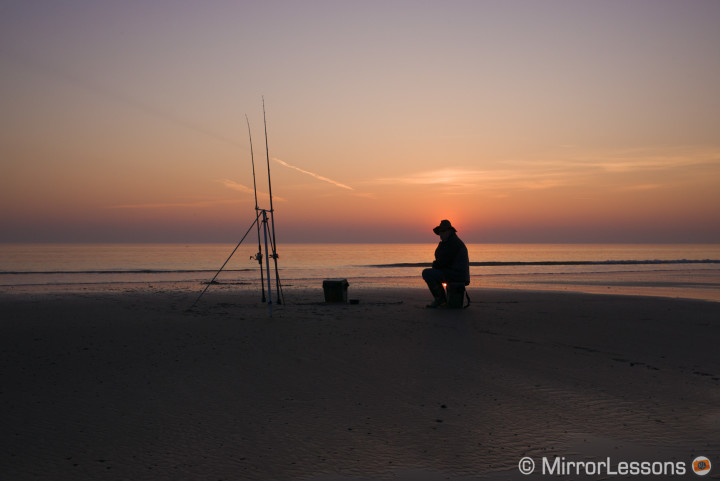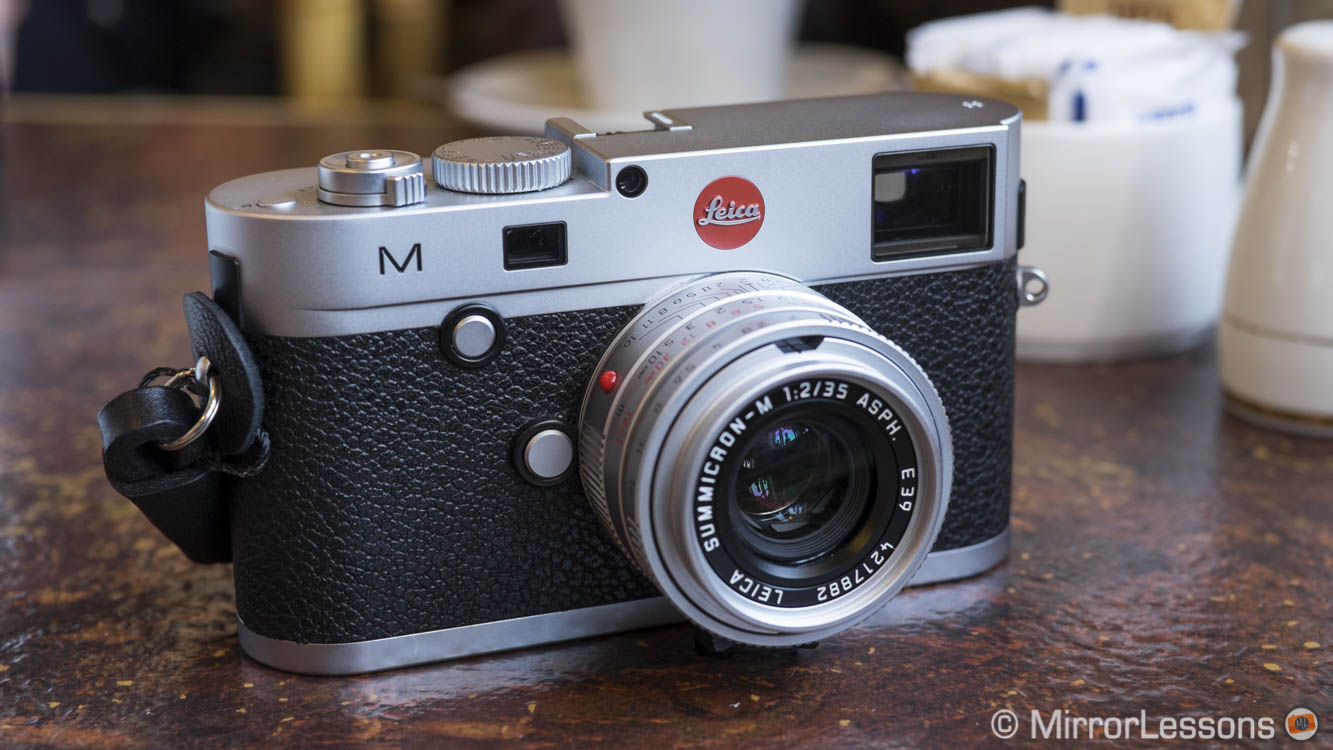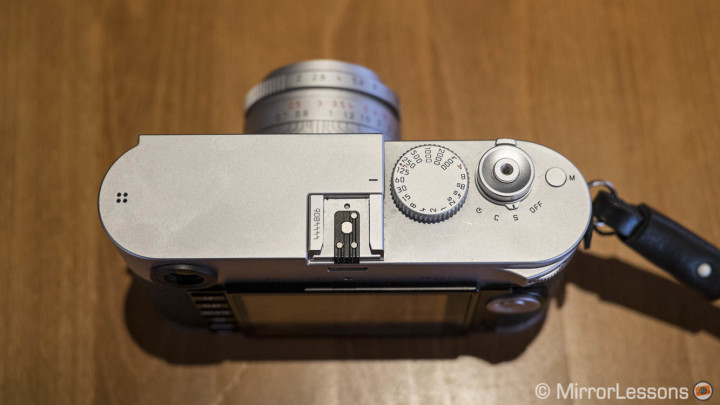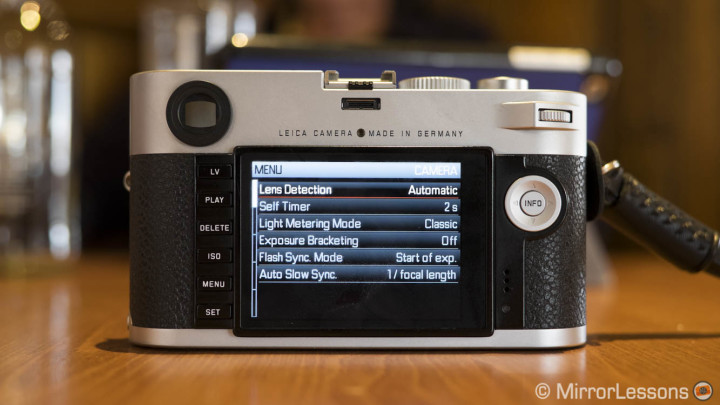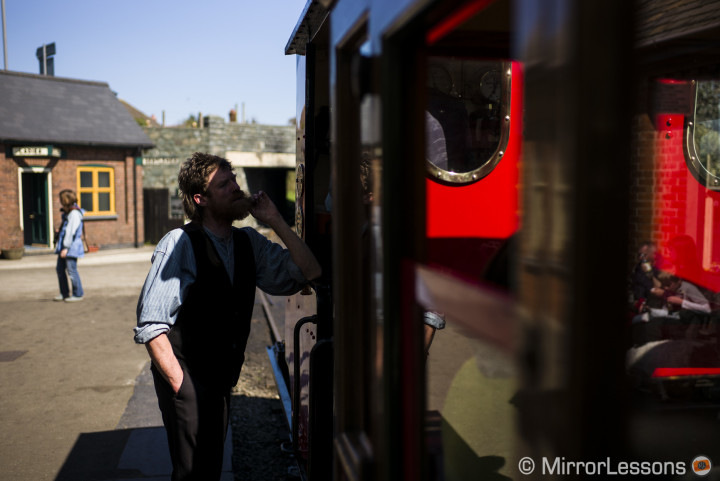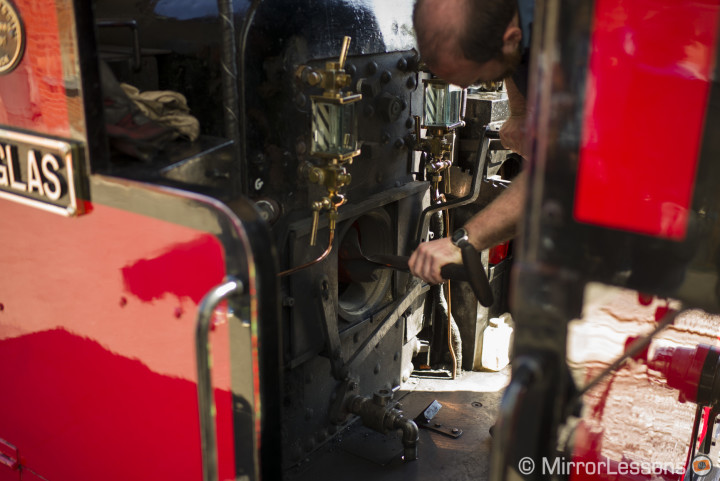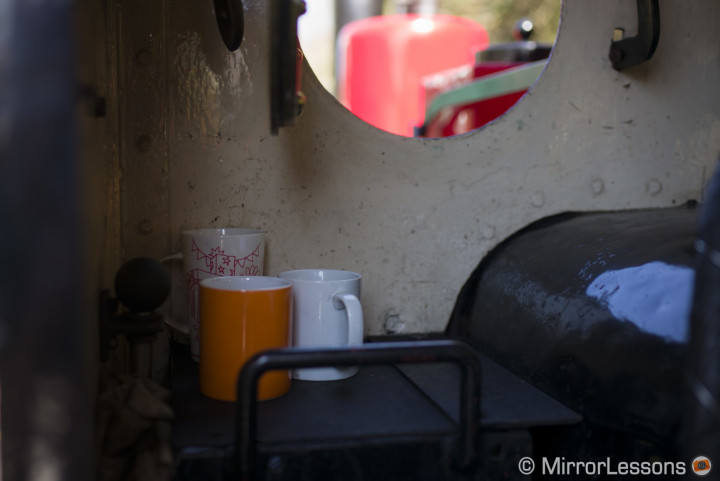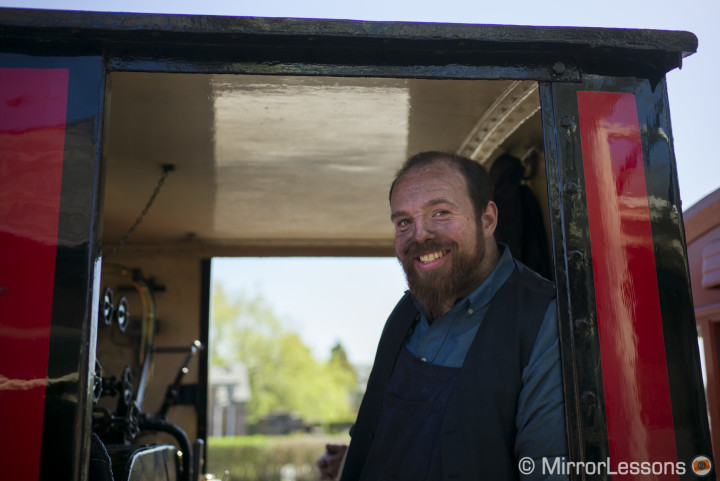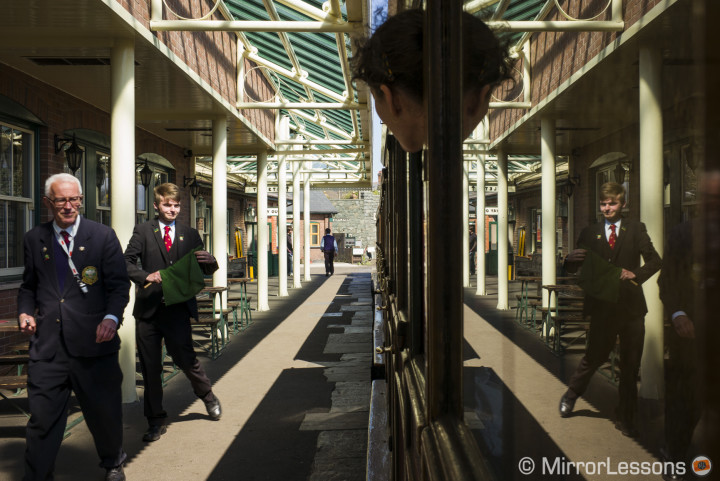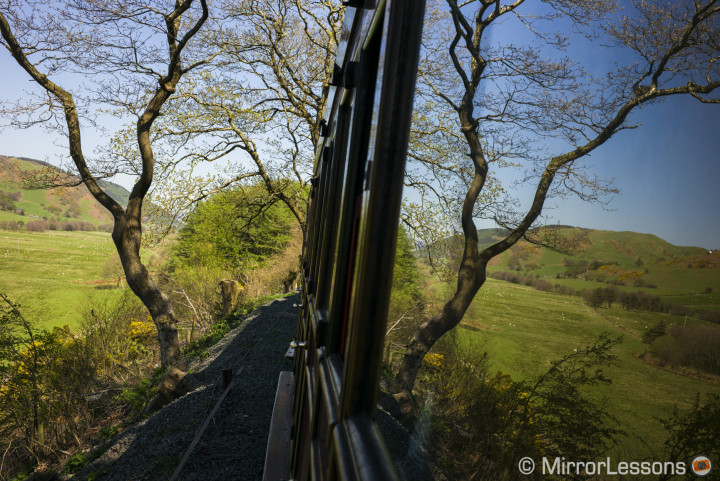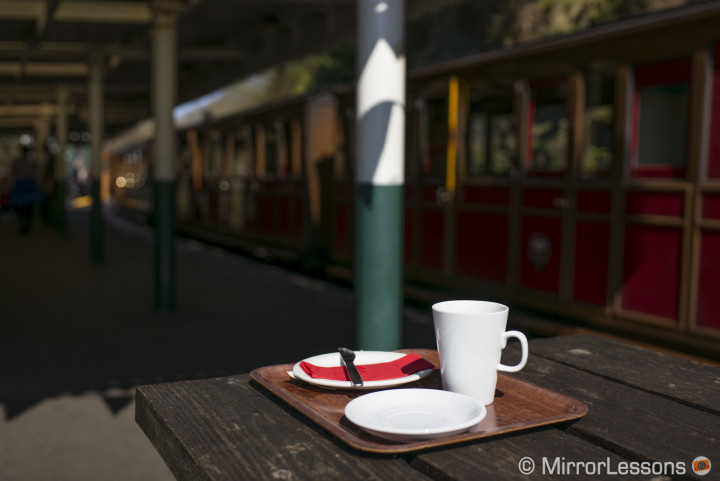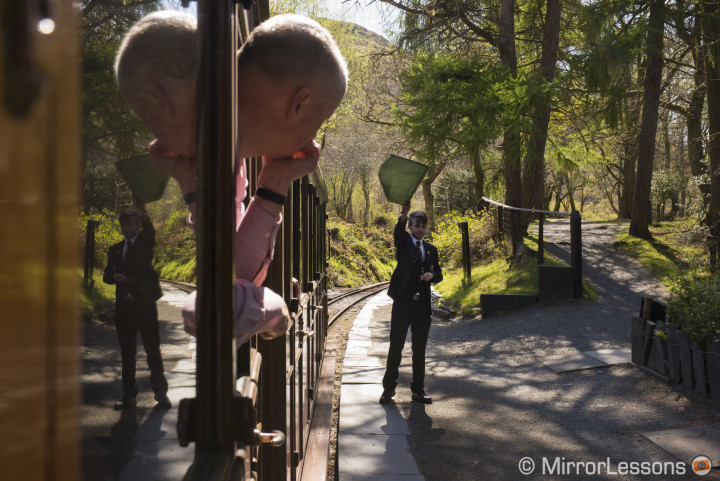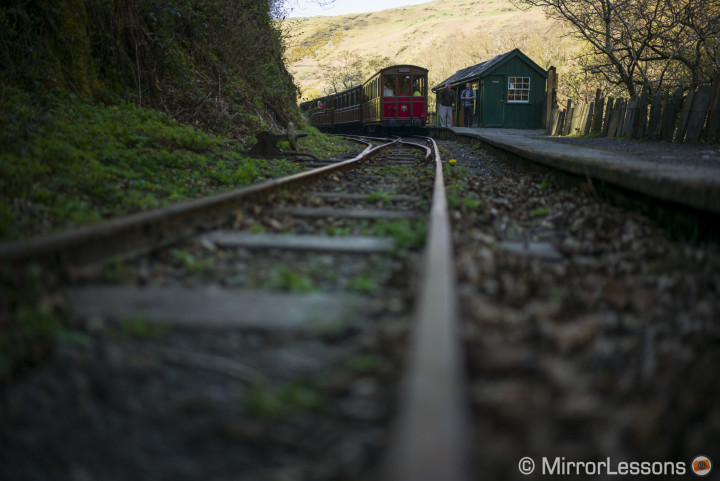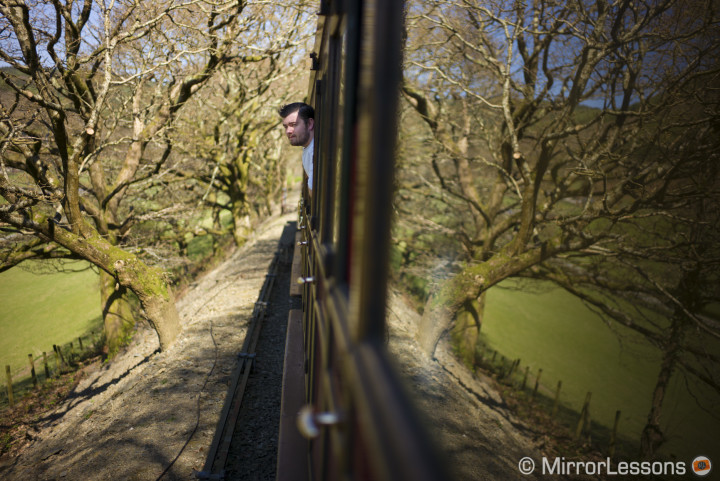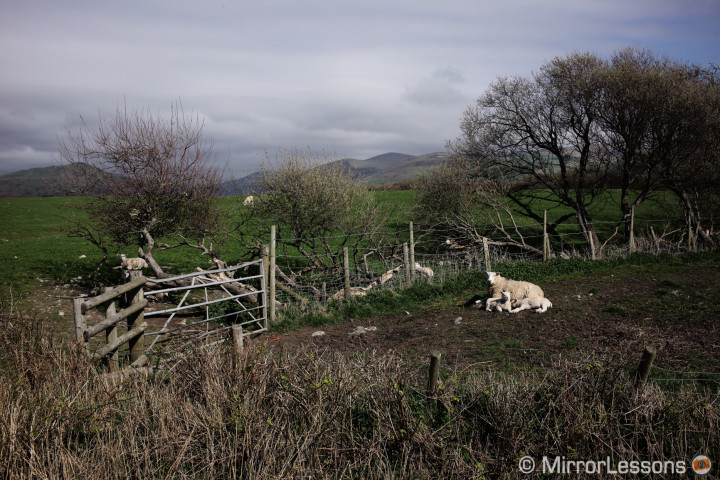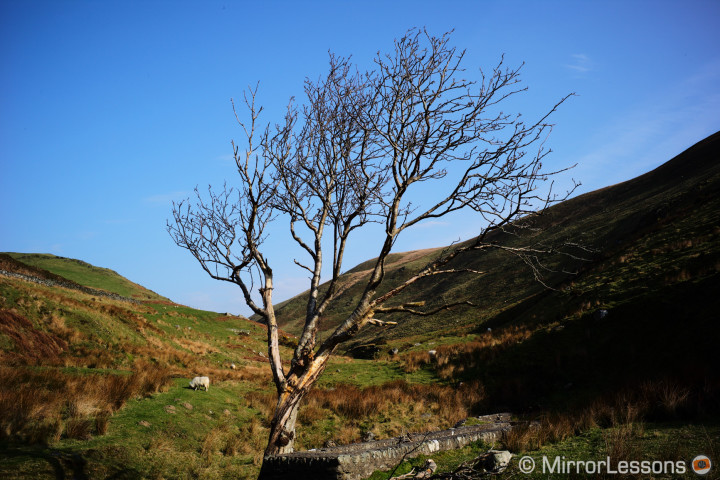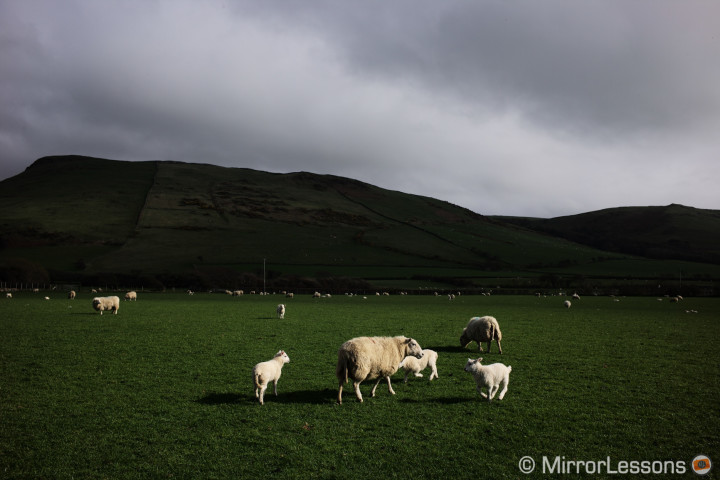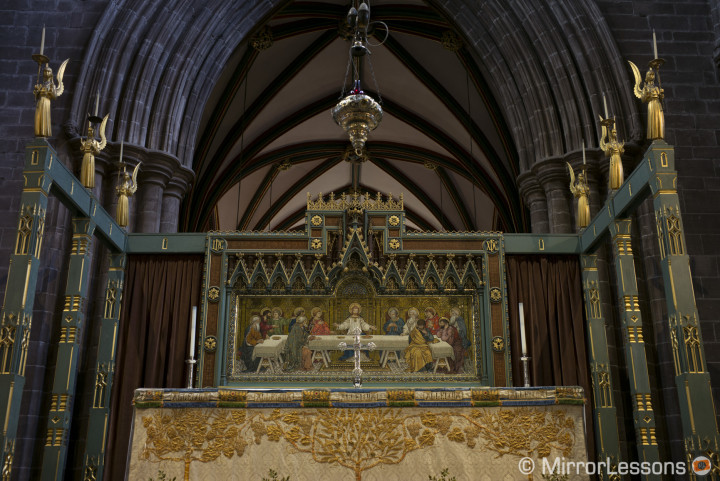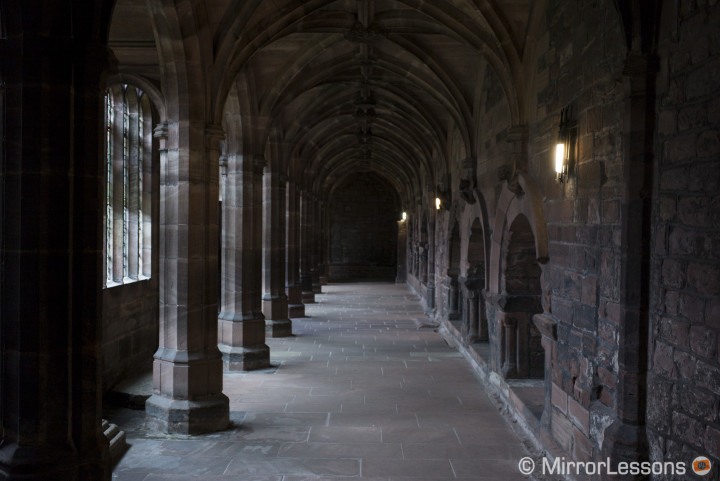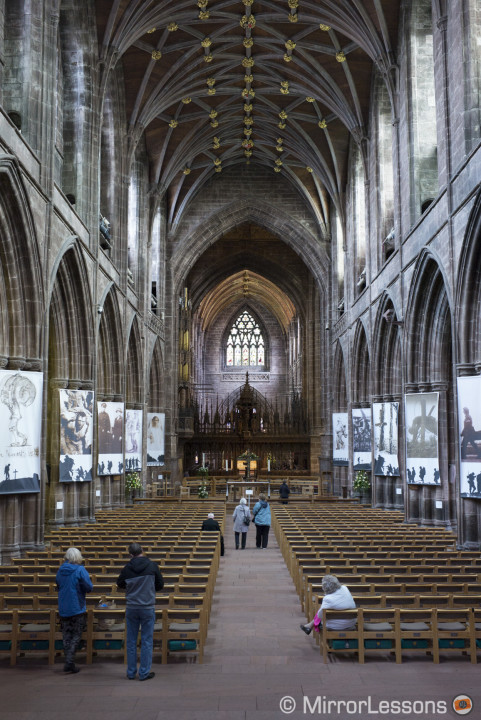When it comes to Leica cameras in the digital age, people are usually divided into two groups. The first group is composed of those who are against it because the cameras are too expensive and aren’t as advanced as cheaper alternatives. The second group is made up of those who still appreciate and embrace the philosophy behind the brand and care less about specifications. There is probably also a third group that is interested but can’t afford the investment and a fourth group that simply doesn’t care.
As for me, I think that it was curiosity more than anything else that attracted me to the brand. After all Leica is an extremely important icon in the history of photography. Now that I run this website, it was just a matter of time before I could finally satisfy that curiosity. I had a couple of opportunities to try the Leica M9 in the past along with some M lenses but this was the first time I was able to shoot exclusively with it for a longer period.
So what is it to shoot with a Leica M camera? Is it that different? Does it give you something that other cameras don’t?
To answer the questions above, I decided to skip the guidelines of the conventional review and write something more personal in chronological order, from the first days of use until the day I sent it back to the Leica office. Two weeks of intense use that perhaps weren’t enough to deliver complete verdict but enough to understand if there was any chemistry between us.
I should also state that there isn’t a typo in the title of this article: I do mean “indecisive”.
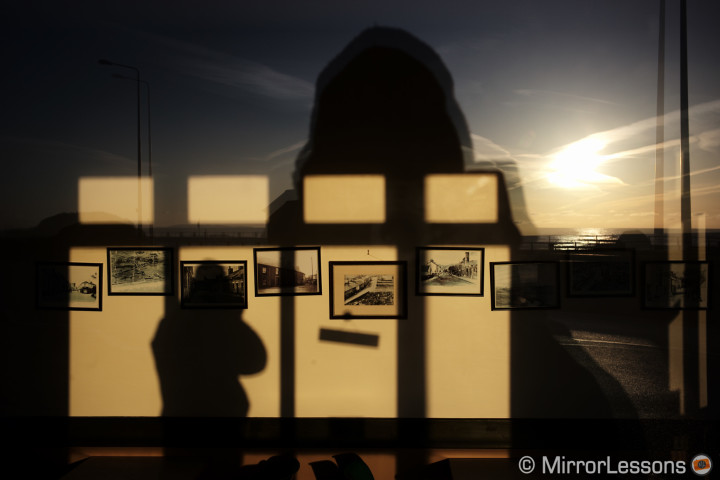
Mechanical precision
The first thing you’ll notice when you open the box and grab the Leica M 240 is that it is heavy. It feels heavier than most of the mirrorless cameras I test these days and this is due to its robust build. It feels like a tank and while not the smallest camera, it easily fits into any small bag including the Cosyspeed Camslinger 105, the bag I use most frequently for everyday street photography.
Initially I used the camera with the Deadcameras wrist strap but after a few days I found it uncomfortable to hold the camera in my hand all the time so I switched to the Deadcameras slim strap and it was a better match. I admit that I got used to the weight quite quickly and at the end of the testing period, it didn’t feel that heavy anymore.
There are also a few details that grabbed my attention. One of them is the precise mechanical sensation you get despite the M Typ 240 being a digital camera. When you mount the lens for example, all you need to do is turn it slightly before it locks onto the mount with extreme precision. At first it is almost surprising. What’s more, when the lens is attached to the body, you don’t get the usual play on the mount: the lens is fixed in place. It is indeed a true sign of excellence.
The Leica M also has a real artisanal feel about it.
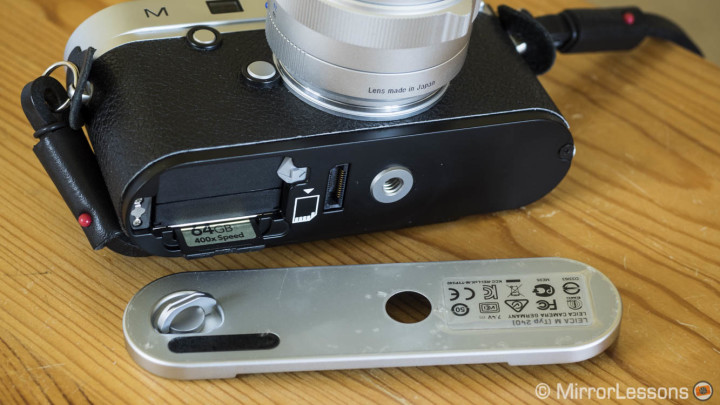
The way you insert the memory card and battery is funny for example. Leica kept the traditional bottom cover of its film cameras, so you have to remove the entire metal cover at the bottom in order to insert the memory card and the battery. There isn’t a default battery door like on other digital cameras. This solution is certainly more time-consuming but the battery life of the M is excellent. It never ran out before the end of the day. So if you insert an SD card with a sufficient storage capacity, you won’t need to deal with the cover during your outing.
There is also an interesting solution designed by Leica Time (an well respected artisan in Rome) if you want quick access without having to remove anything. It is an alternative metal bottom cover that has a battery door and a front grip. It’s an interesting solution considering that it also enhances the grip of the camera, something I didn’t find extraordinary on the M. The very elegant design and simple shape of the M could do with a prominent grip to give you a better hold on the camera. Leica also sells an optional grip.
A quiet camera
Another interesting characteristic of the Leica M is that when you turn it on, nothing happens. The only clue that confirms it is on is the little LED light on the rear. This is surprising as most digital cameras today bring up all sorts of information on the rear screen when you turn them on. In this case, if you want some information, you have to request it. There isn’t a battery life indicator unless you press the INFO button on the rear. For a few seconds, it shows various information about your settings and the space left on the memory card.
The Leica M is a discreet camera in every way. It won’t show any graphics, information or features unless you specifically request them.
The Live view isn’t activated by default but there is a dedicated Lv button that will open the shutter like on a DSLR. Speaking of the shutter, the sound is really pleasant. Not too loud, quick and discreet. Another nice detail that lets you appreciate that wonderful mechanical precision I mentioned before.
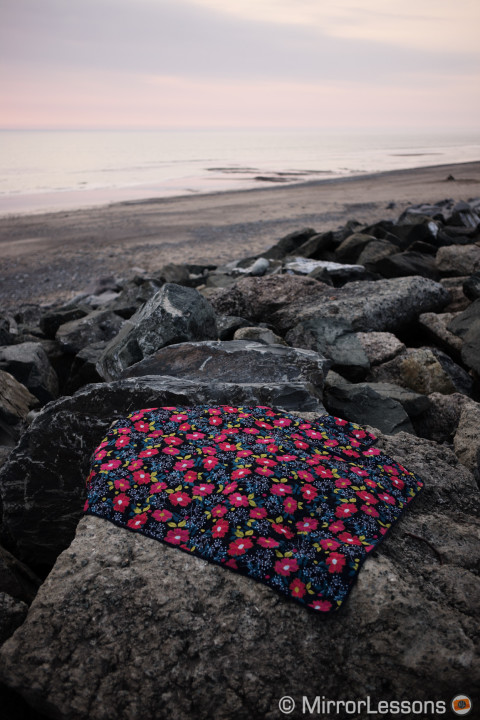
During my first outing with the camera, I quickly became familiar with the controls. I made a few mistakes like being confused by the DNG compression settings and realising afterwards that I was shooting only JPGs. As with every new menu system, there is always a small learning curve. Concerning the physical controls, everything is very intuitive.
The commands you will use the most are the three basic and most important ones: aperture ring, focus ring and shutter speed dial on the top of the camera. The on/off power switch around the shutter release button allows you to switch between single and continuous shooting mode. The latter offers 3fps and if you shoot Raw, the buffer fills up really quickly. I tried it more out of curiosity than anything else but I never felt the need to use it during my time with the camera. It might be a personal prejudice of mine but continuous shooting is not something I would instinctively use with this camera.
There are two more buttons that let you start movie recording (on top) and control the exposure compensation (front) in conjunction with the setting dial on the rear. This exposure compensation solution is the only thing I didn’t like. I found the front button difficult to press (not sensitive enough) and difficult to hold when you have to operate the rear dial as well. I would prefer a proper dial on top which would also suit the analog look of the camera.
Update: in the menu you can set the exposure compensation to just the rear dial. Thanks to Alexander for the insight.
On the back, there is a dedicated ISO button and a SET button that brings up a quick menu. The main menu is also easy to navigate and you won’t find a never-ending list of options. Finally, the directional pad on the rear helps you to navigate inside the menu.
Four eyes and a rangefinder
During my first week with the camera, I took a quick trip back to when I was a complete novice. I uploaded some pretty badly composed photographs into my Lightroom catalog. I had a few temporary thoughts in my mind while reviewing these images: from “there must be a setting for the viewfinder that I missed” to “the frame must be incorrect”.
Then I asked myself: “Mathieu, are you blaming the camera for some crappy photos you took?”
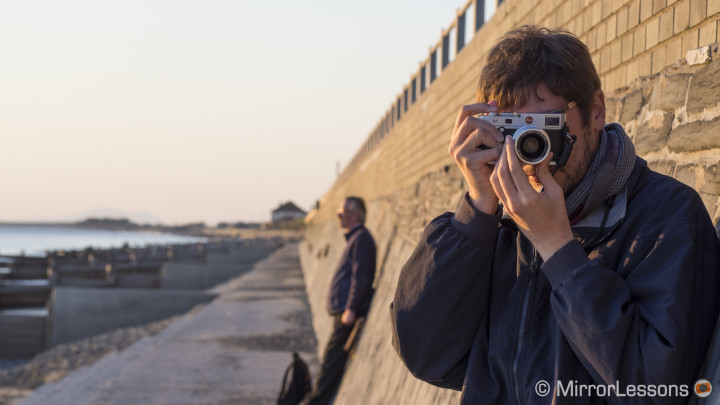
No, there isn’t anything wrong with the camera. The only thing I can say is that I wish the finder were a bit bigger because I wear glasses. I learned that four eyes and a rangefinder don’t really get along that well. But with a Fuji X100T for example, I had fewer issues.
I tried to compose without my glasses and I could see the bright red lines that show the limit of the frame much better. Also I was using a 35mm lens and with that focal length, the bright lines are almost at the margin of the finder, which made it more difficult to detect with my glasses on. With a 50mm lens, those bright lines would have been closer to the center of the finder, allowing me to see outside of the composition, which is one of the most interesting aspects of using a rangefinder camera.
In case you are not familiar with it, the M has an optical rangefinder. So when you change focal lengths, the angle of view in the finder doesn’t change because what you see through it doesn’t come from the lens. The only thing that helps you with the composition are those bright red or white lines (you can choose the colour) that show you the limit of the image angle of the relevant focal length. If I had known, I would have asked for a 50mm instead. I could have also used contact lenses for two weeks but it has been a while since I last wore them and I didn’t want to bother for only two weeks. There are also finder magnifiers designed especially for this kind of problem.
So what I had to do was concentrate on the centre of the finder and guess at my composition. It wasn’t easy especially when shooting quickly on the street. See an example below: I was crossing the street when I saw an old couple sitting in a café. There was a nice light illuminating them and it looked like a good picture. I didn’t want to attract any attention so I composed, shot, and quickly moved on. You can see the original photo, then a cropped version where I tried to adjust the composition the best I could. But there is still not enough space at the bottom and too much empty space on top.
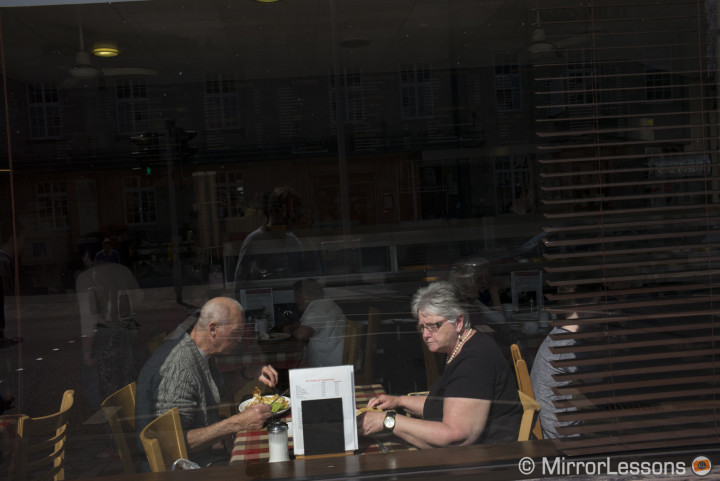
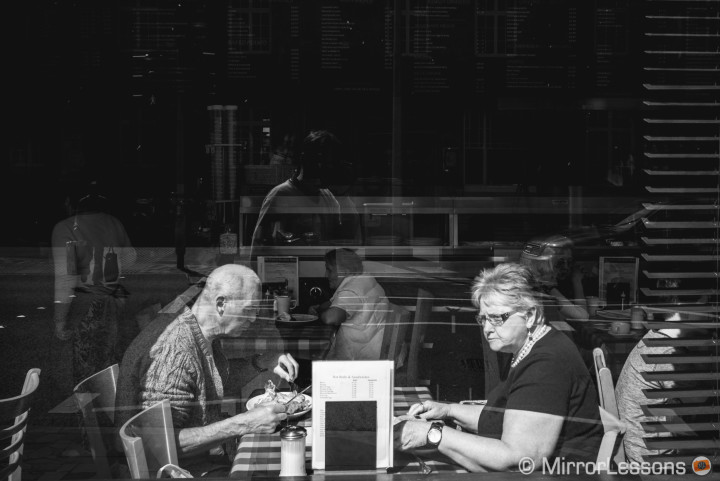
This rangefinder limitation combined with the parallax effect made me realise how accustomed I am to seeing exactly what I am going to get with an electronic viewfinder.
What you see through the finder isn’t 100% exact because you aren’t seeing through the lens. So if a man is walking into my frame and I want to take the shot when he is exactly in the centre, I’ll have to take the shot slightly before that if he’s coming from the right. If he’s coming from the opposite direction, I’ll take the shot slightly after. With the Leica M, I had to focus on imagining different elements blending together and predict my composition. The more I forced myself to practise, the more I familiarised myself with the optical rangefinder. But I am still not sure if I could abandon the convenience of modern EVFs.
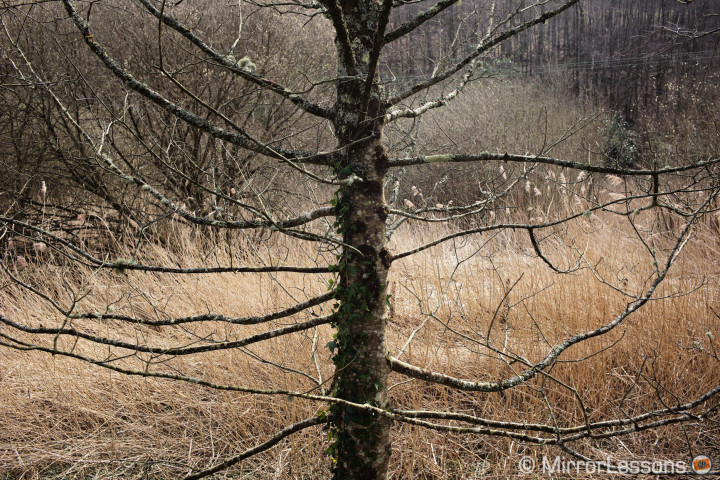
What I really enjoyed was manual focussing. I thought that would have been the most difficult part but that wasn’t the case. Autofocus is one thing I didn’t miss at all. One reason is the hyperfocal distance. You set a high aperture like f/11 or f/16, adjust the focus ring accordingly to the distance scale marked on the lens and you know that everything will be in focus from infinity to 2 metres for example. All you have to do is fire the shot. Even the most advanced autofocus system can’t be that fast.
With faster apertures, you have to align the ghostly image that appears in the bright rectangle at the centre of the finder. That’s what a rangefinder is all about: in addition to the main viewfinder you use to compose your image, there is a second smaller one that projects a ghost image in the center. Once you align it by turning the focus ring, you know that the element is in focus. At the beginning it takes a little bit of practice as well. I shot all kinds of silly stuff around the house to familiarise myself with it like a kid playing with his new toy. I know that most photographers are like that when they first try out their new camera. But when you go outside in the real world you also learn that it can sometimes be very tricky. It can be very difficult to understand what are you aligning, especially in a confused image like the one below.
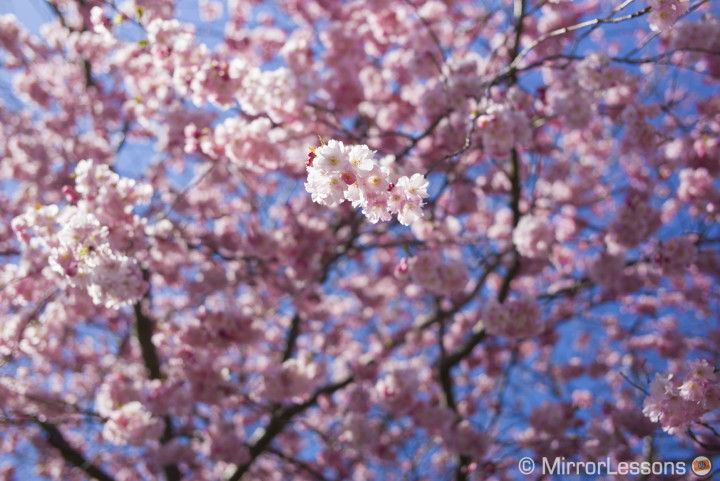
More than once I ended up with photos that were completely out of focus or with the focus point in the wrong distance. The best way to focus more quickly at faster apertures is to guess the distance from your subject. Working constantly with the focus ring and the distance scale helps you to detect an approximate distance with your eye. For example if I decided to set my aperture to f/2.8 to isolate something from the background and I guessed that it was between 1 and 2 metres, I can “pre focus” by aligning my focus ring on those distances and then fine-tune my focus point using the viewfinder. That way the chance of confusing the ghost image and focussing on something in the background is less probable.
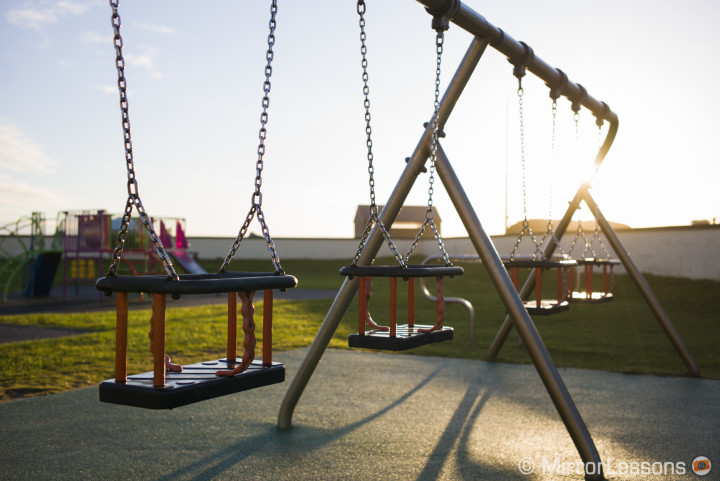
This is another characteristic I really appreciated with the M was learning how to imagine distances between you and your subject.
The more you learn, the more you understand whether you are or aren’t close enough to what you want to photograph. You don’t even try to compose; you think about the distance first. It is a great exercise once again. Of course this is not limited to the Leica M, as every manual focus lens with a distance scale can help you do the same.
Feeling comfortable
I thought that the best way to practise was to shoot in the streets. They are the ideal location because you need to change your settings and decide what to shoot really quickly. I went to several Welsh towns with the intent of capturing interesting moments and people. I can honestly say that I failed. And I found my failure quite interesting.
In a way, the M 240 helped me realise which photography genres I feel more comfortable doing.
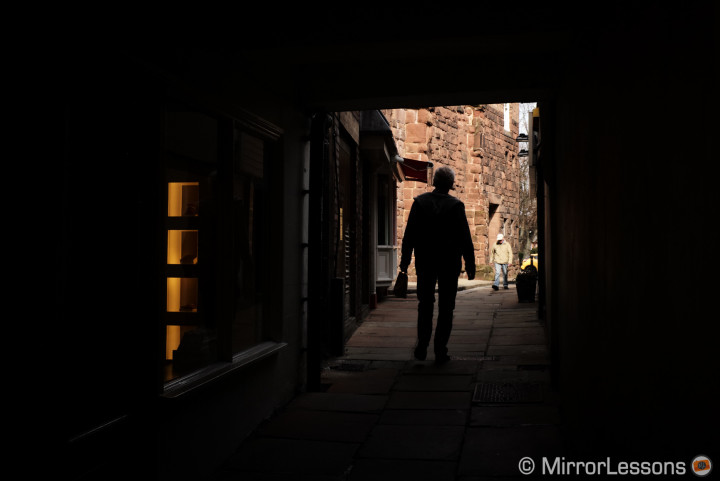
Here comes the first reason for the “indecisive” word in the title of the article. I was quite indecisive on the street. To be honest, I have never been that confident at doing street photography. Or to be more specific, I am not confident with a certain type of photography that involves candid shots of people. I rarely see something that grabs my interest enough to want to photograph it. Maybe I am simply not observant enough. I can’t see the extraordinary in the ordinary. I often think “it’s just a guy walking”. When I try to capture random people going about their daily routine, I often get bored with it. I am also a shy person and that’s probably a big factor that negatively influences me. I don’t like the “sneaky” approach when I photograph people, hoping not to be noticed. I guess that if someone were to film me, I would look very hesitant. In fact, you might as well stick a big “PHOTOGRAPHER” sign on top of my head.
Was all this because I didn’t have the right chemistry with the camera? I don’t think so because the feeling I had with the Leica M was far better in other situations where I had a more specific purpose.
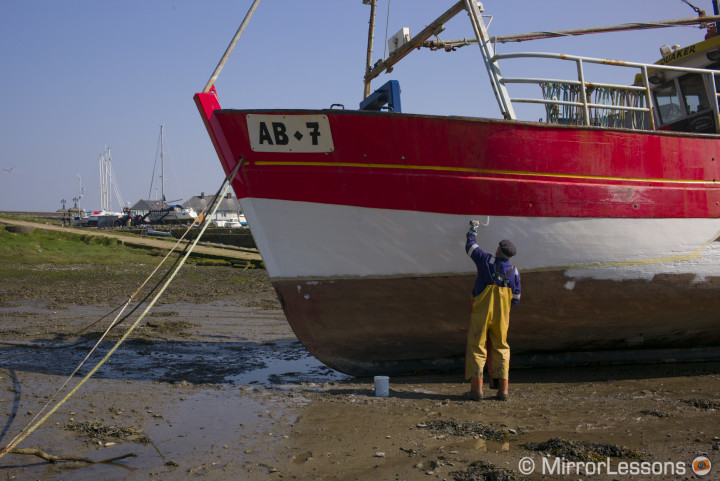
I like to tell stories. The location doesn’t matter. I like to document something specific that’s happening. It can be an event like the Fringe Festival reportage I did with the Sony A7s last year, runners in the early morning fog in Turin with the Fuji X100T or a leather artisan at work with the Loxia manual focus lenses. When I have a precise goal in mind, I feel more comfortable. The gear simply becomes part of what I am envisioning. That’s where I started to enjoy the M.
I also started to appreciate the image quality produced by the M Typ 240. Without digging too much into the specs, it has a 24 megapixel full-frame sensor with no AA filter so we’re talking great sharpness and very good dynamic range. But what surprised me the most was the colour rendition.
The Leica M 240 might be the digital camera with the smoothest colour rendition I’ve ever seen.
I started to notice it right from the first photos I took in different scenarios. The colours of the DNG files (RAW) are really natural and very well-balanced: delicate tones, vibrant colours especially for the warm tints such as red or yellow. The camera also has some picture profiles that Leica calls Film Styles. Sometimes they add too much contrast or underexpose a little. But in scenes with a balanced contrast, you get a very interesting result.
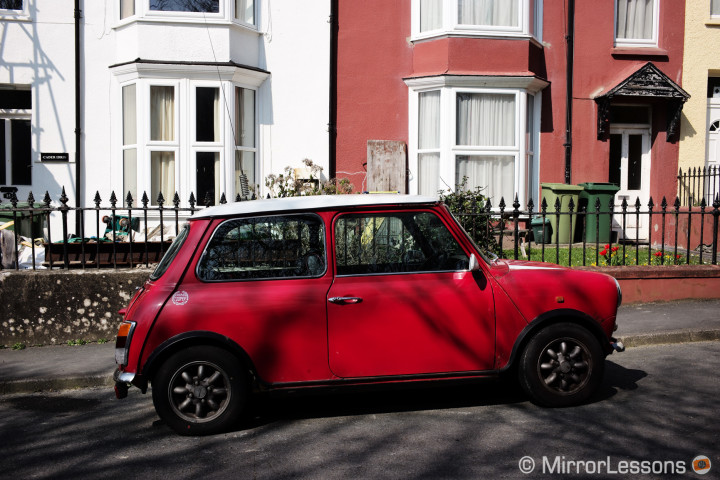
Probably the time I enjoyed the most with this camera was when I was shooting landscapes. I think it is rapidly becoming my favourite genre. Recently I shared a gallery where I used shallow depth of field for landscape shots. This also allowed me to appreciate the quality of the M lenses. I had already experienced them on the Sony A7 two Christmases ago. I think that the real quality you get from the M is not so much in the camera but the lenses. Perfectly sharp from edge-to-edge, no diffraction at f/16, and the bokeh can be pretty special. I had the 35 Summicron ASPH and then Zeiss kindly sent me the new Distagon 35mm f/1.4 which is a superb lens (review coming soon).
I did use the live view and focus peaking on occasion for some of the shots above. When I placed the camera close to ground level, it was easier to do and I think that Leica did the right thing by implementing this function. The peaking works really well: precise and easy to detect. I also loved the metering system of the camera. You can choose between classic and advanced mode. The first is basically semi-spot metering, so it will give priority to what’s in the centre. With the advanced mode you get the usual multi, centred and spot. I forced myself to work in manual mode even though you can use Auto ISO and Aperture priority. I only used Auto ISO with a maximum of 800 when using the hyperlocal scale on the streets. I am not good enough yet to predict a sudden change in exposure.
What else is left to say? I didn’t shoot a lot in low light with the camera but I did test the different ISO levels and the camera performs well. The highest native sensitivity is 3200 and can be extended to 6400 and ISO Low (100). It’s not the best performance I’ve seen from a full frame camera but the colour noise isn’t too overwhelming and there is a slightly organic feel to it. It’s pleasant overall.
The M is also the first in the series that can shoot video. You get different frame rates in Full HD. I recorded a few clips just to see the quality of the files (which isn’t that bad actually) but it is certainly not the main characteristic of this camera.
The indecisive moment
I have no shame in admitting that I am used to the comfort of the most advances features you can find on modern mirrorless cameras. I like the real time exposure preview of an electronic viewfinder. I like to see exactly what my composition is going to be. I like to compose by tilting the LCD screen. Stabilisation can be really helpful. Autofocus is really convenient even if I admit that it is the last thing I missed in this case. Working with the Leica M made me step back for two weeks. It made me uncomfortable.
The indecisive moment was me not getting the shots I was hoping for on several occasions.

But I loved the experience and it improved after the first week. I think more than anything, it helped me define what I like and don’t like to shoot.
I am uncomfortable on the streets with people I don’t know while I feel completely at ease in a natural setting or when I have a specific story to tell. The Leica M is a great tool for any of these genres.
This camera also helped me confirm what I’ve been thinking for a long time now: there isn’t really one camera that is better than all the others. There are cameras that you have more chemistry with or that serve your purpose better. And there are cameras for every budget. Sometimes I envy some avid Leica shooters because they actually don’t care about specs. For example, in one of the most well-known Italian Leica stores in Milan called New Old Camera, I remember some photographers there being happy about the M 240 because now they get usable ISO up to 3200. In the meantime, many folk (including me) were excited about the Sony A7s and its usable 102400 ISO! I can’t think of a better example to summarise this subtle difference.
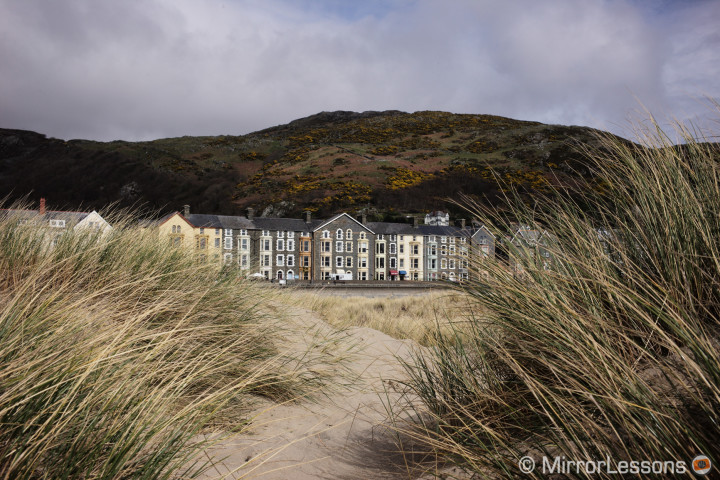
Yes, the Leica M 240 is very expensive. And I understand that money is the biggest controversy about this system. But it is also true that many photographers can spend a lot of money on photography equipment without buying a Leica camera.
However I think that sooner or later Leica will have to face the fact that the M is not the only lighter, smaller and high quality alternative to a DSLR or medium format system anymore. I hope that they will eventually respond to this new reality.
You may argue: if you want a cheap Leica, get a film model. Or even better: the only true Leica is the M analog camera. But I disagree. Leica, like any other camera brand, needs to evolve and the future is digital.
I understand and respect film. And Leica does not plan on forgetting its roots, as demonstrated by the release of a new analog camera last year (the M-A). But it would be as important to bring out something for the new generation. I don’t expect Leica to suddenly reduce its prices drastically or move away from film. But an entry level digital M camera at half the price would be very appealing because the brand still has its iconic importance even in today’s digital world.
Maybe someone inside Leica has already given it some thought. Or maybe there are simply some indecisive moments there as well.
